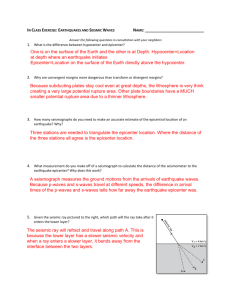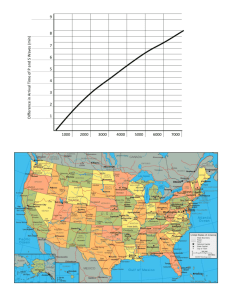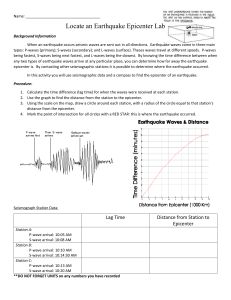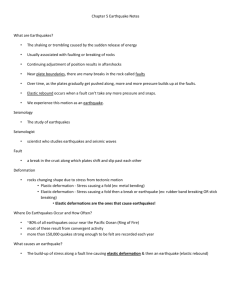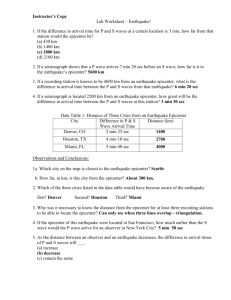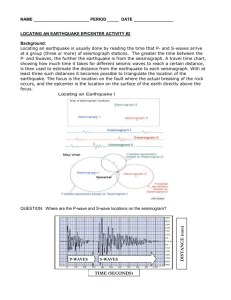Earthquake Measurement & Location: Seismology Presentation
advertisement
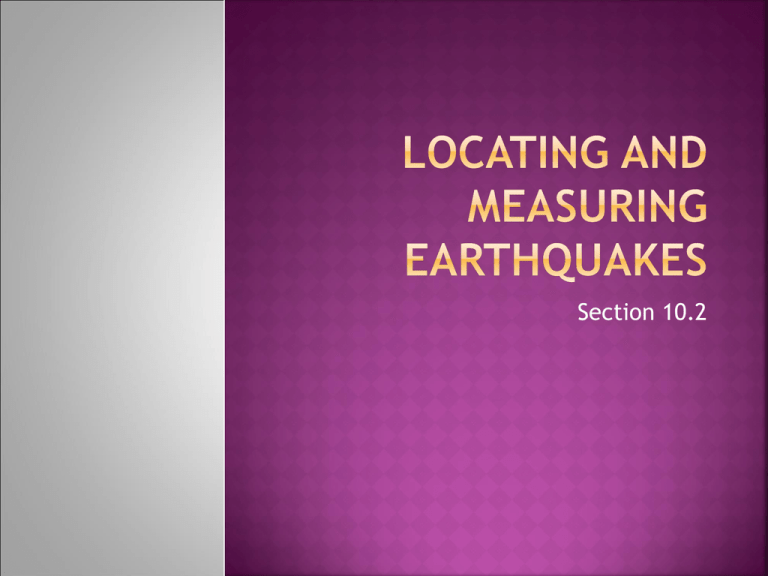
Section 10.2 Modified Mercalli Scale: ranks earthquakes from intensity: 1 (barely felt) to 12 (total destruction. It measures the destructions that the earthquake caused Richter Scale: Used to measure the magnitude of an earthquake. Each time you go up 1 number, the earthquake is 10x stronger Magnitude is the measure of an earthquake based on the strength of the seismic sound waves emitted by the earthquake. Seismographs: detects and records waves produced by earthquakes Scientists use data from seismogrphs to locate earthquakes’ epicenter and to measure their magnitudes Seismogram: A record sheet that is placed on a drum attached to the base. The attached pen does not shake because it is attached to a weight Seismograph Check this bridge out! P waves produced by an earthquake always arrive at a seismograph station before the S waves The farther a seismograph station is from the epicenter, the greater the difference in the arrival times of the P and S waves Seismologists use the difference in the speeds of P- and S-waves to locate the epicenters of earthquakes 1. 2. Subtract the arrival time of the P-waves from the arrival time of the S-waves (this can be expressed in hours, minutes and seconds, such as 08:06:40 or just hours and minutes On the clean edge of a sheet of paper, make two marks to show the observed interval along the travel-time scale on the vertical axis of the “Earthquake P-wave and S-wave Time Travel” graph 3. Keeping the edge of the paper vertical, slide the marks on the edge of your paper along the P- and S-curves of the travel-time scale until the marks match up with both curves 4. Carefully follow the marked edge of your paper straight down to the horizontal axis to find the distance to the epicenter 5. If you draw a circle around the recording station with a radius equal to that distance, the epicenter should be located somewhere within that circle. 6. To find the exact location, follow the procedure above to find the distance from the epicenter to at least three seismic recording stations. 7. The epicenter is the point at which the circles intersect or meet 8. If you find that there is a small triangle, the epicenter is probably near the center of that triangle To find origin time, subtract the travel time from the arrival time. To find origin time, subtract the travel time from the arrival time. It is like if a friend who lives a half hour away, arriving at your house at 10am. Based on that information, you know your friend started out at 9:30 am. Example: if the epicenter is 4000 km away, the travel time must be 7 minutes. If an earthquake was recorded at 2:25 pm, and the P-waves took 7 minutes to get there, the earthquake must have actually happened at 2:18 pm If an epicenter is located 4000 km away, how would the arrival times of S- and P- waves compare on seismograms at your location? An earth quake occurred at 2:00:00. When would the first P-waves arrive at a seismic recording station 8000 km away?


